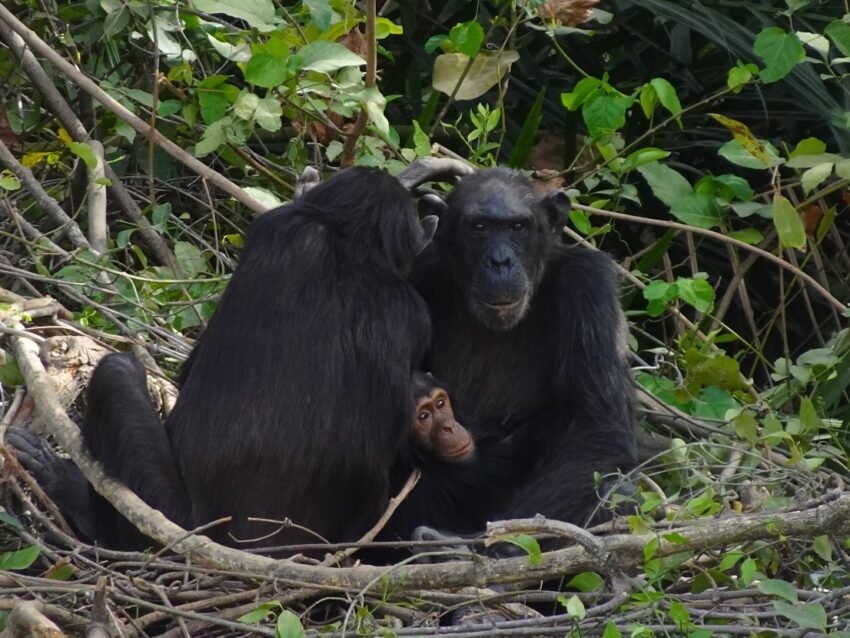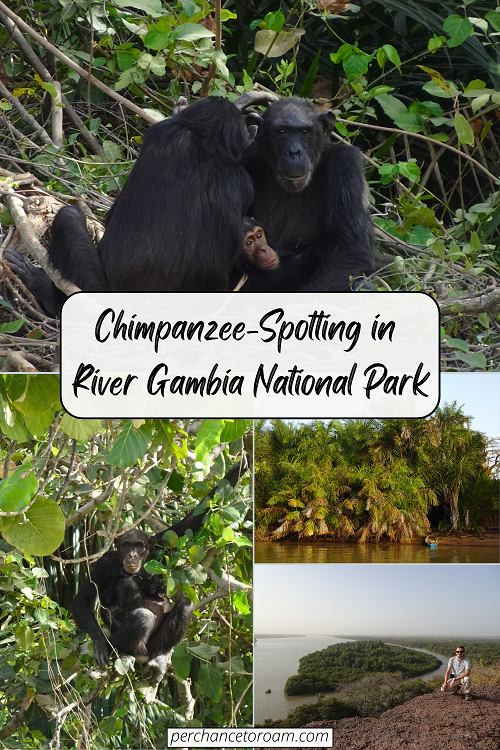The River Gambia National Park was one of my absolute highlights on my recent trip to The Gambia. Since the end of the 1970s, chimpanzees have been gradually reintroduced to the country by settling them in the park, and you can visit them by taking a boat tour around four islands in the river.
Apart from that, I also visited two other conservation projects in the area: the Red Colobus Project and the Horse and Donkey Trust. All of them do amazing work and are well-worth checking out, but if you’re short on time and have to pick one, I suggest visiting the Chimpanzee Rehabilitation Project.
In this post, I’ve outlined everything you need to know about visiting this amazing National Park.
This post may contain affiliate links, and I might earn a small commission at no additional cost to you. For more info, click here.
What to See and Do in River Gambia NP
The main focus of the National Park is the Chimpanzee Rehabilitation Project (CRP), which was founded in 1979 by Stella Marsden and the Gambian government as a sanctuary for orphaned and formerly captive chimpanzees.
The initiative sought to provide a safe, semi-wild environment where chimps could be rehabilitated and live with minimal human contact. Over the years, the CRP has successfully released several groups of chimpanzees onto the islands, allowing them to form self-sustaining communities.
Today, the project is run by Janis Carter, a US-American primatologist, who had some very interesting stories to tell around the dinner table, especially about the 7 years (!) she spent alone living with the chimps on one of the islands. Part of her fascinating story is told in the HBO documentary ‘Lucy the Human Chimp’.
Taking a Chimpanzee Boat Tour
The four islands on which the chimps live are off-limits to visitors, but you’re allowed to take a boat tour along their shores, where sightings are pretty much guaranteed. There are three options to do this:
- You can make your way to Kuntaur village and organize a private tour from there, which most people do via Kairoh Garden Lodge.
- You can stay overnight in the Chimpanzee Rehabilitation Camp inside the park and take an official boat tour with them. This option is more expensive (£150 including food and accommodation), but you can access channels in the river that other boats are not allowed to visit. Plus, the camp also offers some cool complimentary nature walks. Make sure to book ahead (janisacarter[at]yahoo.com), as they only have a couple of spots available every week.
- If you’re based on the coast and don’t want to travel all the way upriver on your own, you can take a guided overnight tour to the park, which would be the easiest and most comfortable, but also the most expensive option.
I chose to splurge for once and do it with the CRP and I did not regret my decision. People here work with the chimps daily and really know their stuff. 5 minutes after the start of the boat tour we spotted the first chimpanzees and at the end we had seen between 10 and 15, including some mothers with tiny babies.
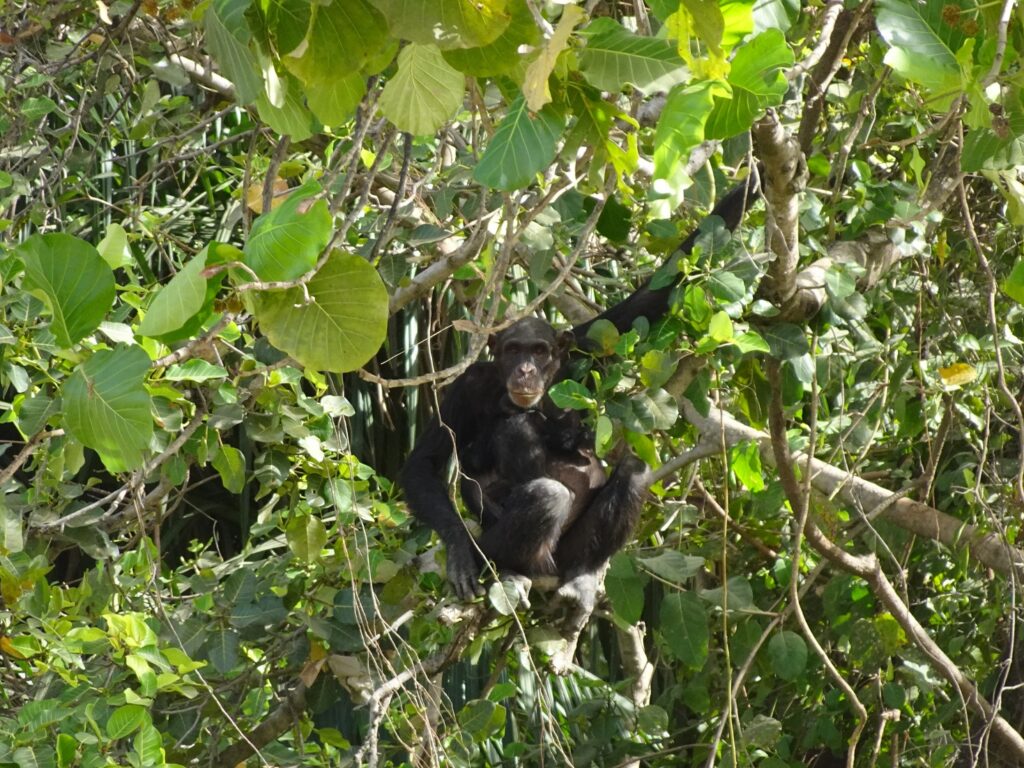

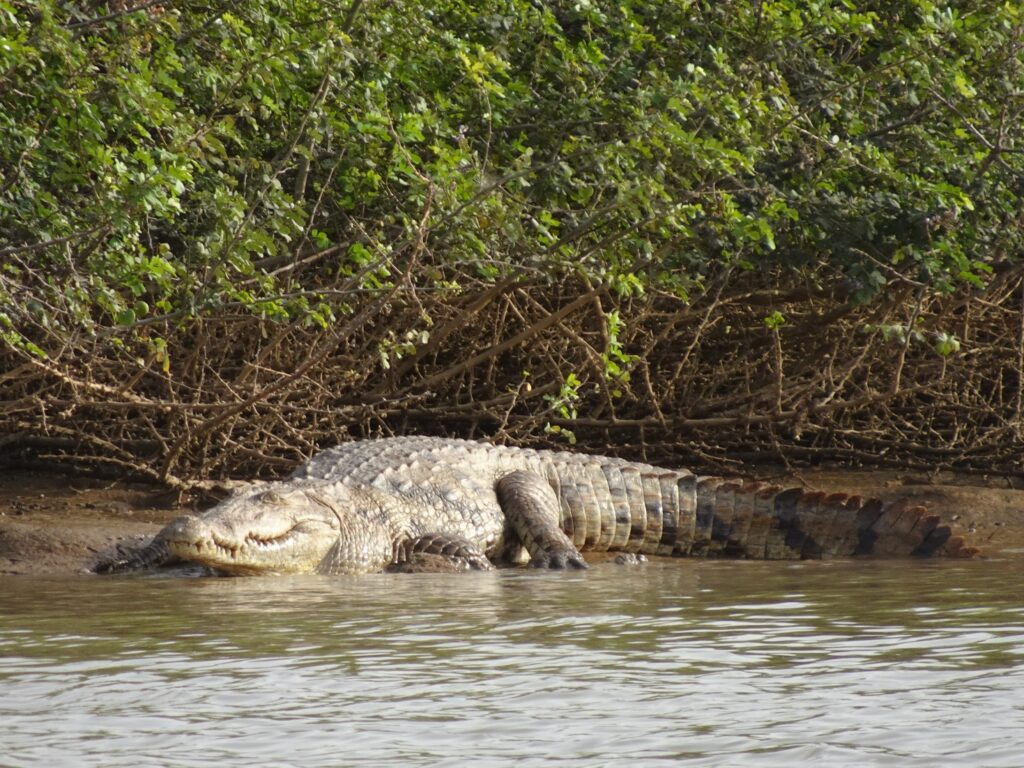
The whole tour, which went once around the large main island (which is paradoxically known as ‘Baboon Island’) took about two hours and apart from the chimps we also spotted lots of Red Colobus Monkeys, Green Monkeys and birds, some huge crocodiles and a couple of hippos that got disconcertingly close to our boat.
Both the guide and skipper were top-notch, and I also enjoyed the fact that the tour was rather small, with only 6 people taking part (there’s not much room at the camp). The only downside is that the camp is only open on Saturdays and Sundays, so you’ll have to time your visit for the weekend. During the week, you can always choose one of the other options, though.
Nature Walks Around the CRP
If you stay at the Chimpanzee Rehabilitation Project Camp, you can take a couple of optional guided walks around the area. I really liked the night-time bushbaby walk, which led through the surroundings of the camp.
We managed to spot three bushbabies on the 30-minute stroll, albeit quite far away, so we mainly saw their eyes in the beam of the flashlight. Still, I liked the experience, as I had never seen them in the wild before.
If you’ve got a good flashlight, I recommend taking it along to increase the chance of spotting something (I spotted most of the bushbabies myself by shining the beam around).
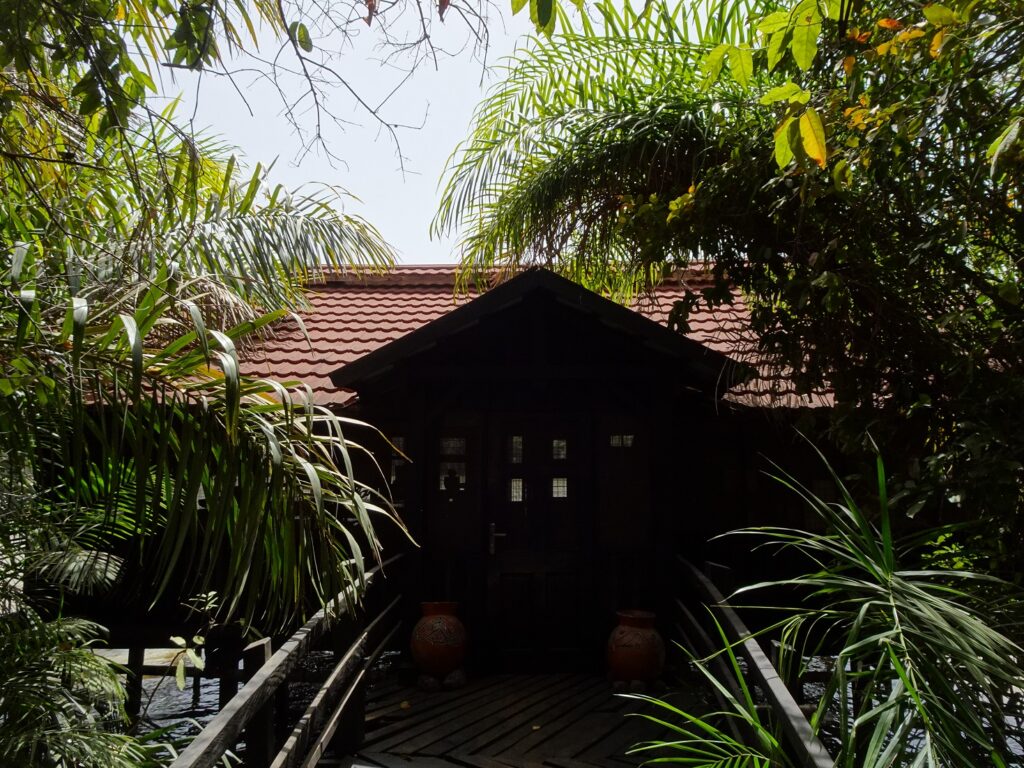
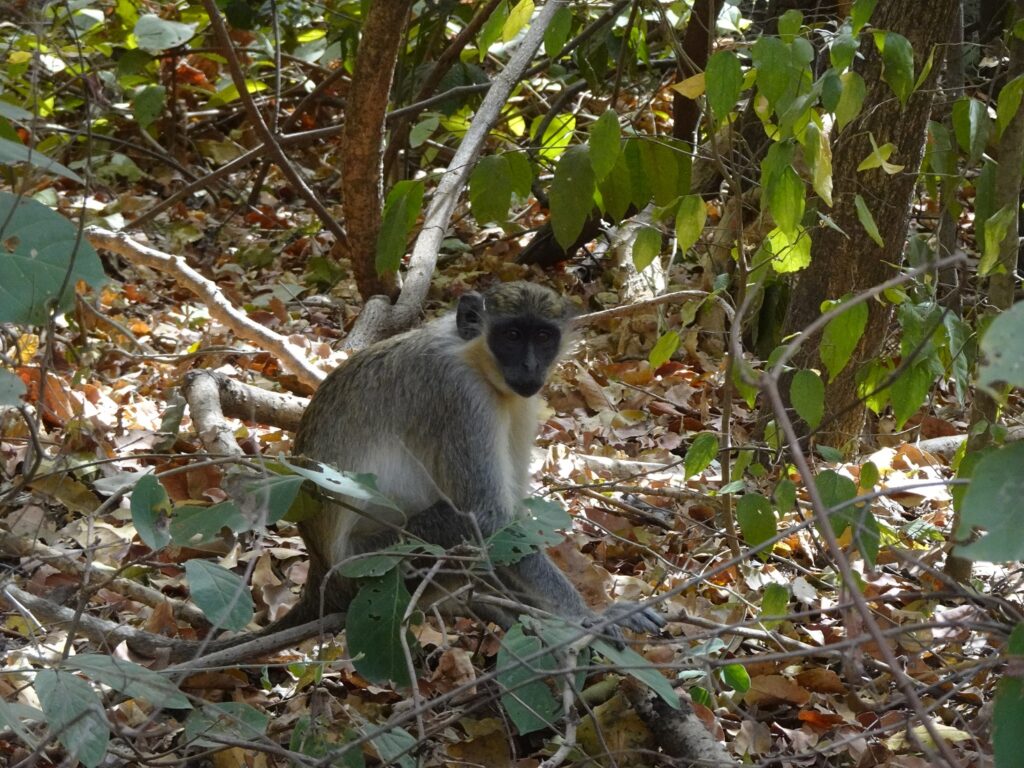
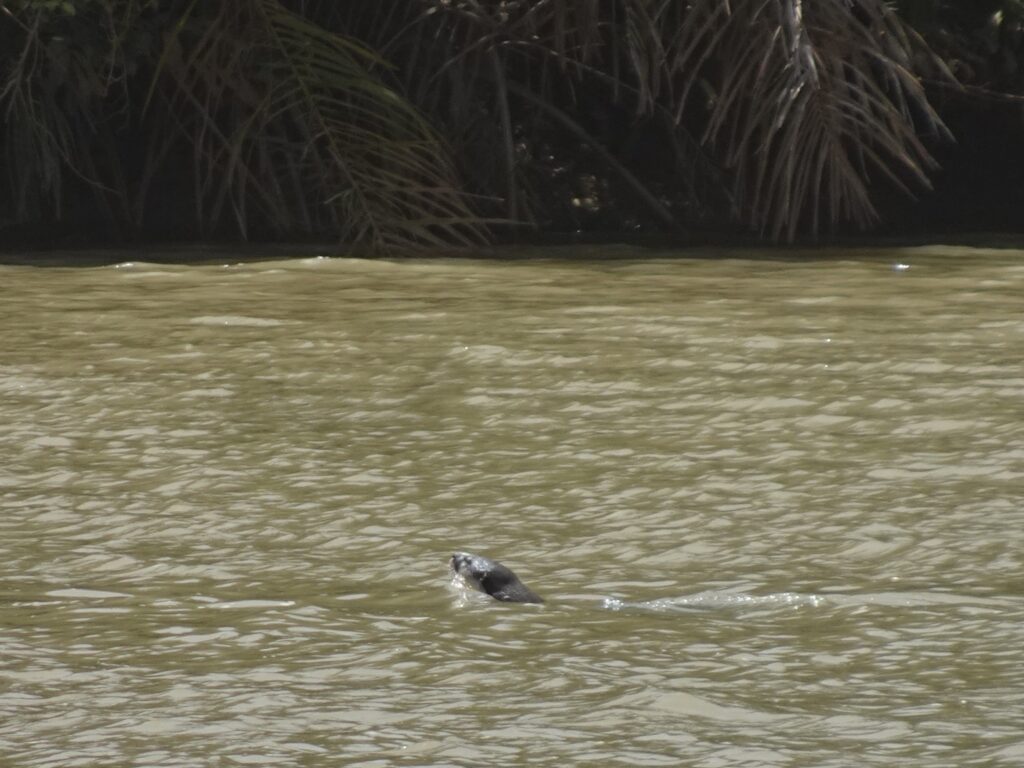
The camp also offers a free guided nature walk along the escarpment in the morning, but I decided to take the morning boat trip to Sama Boi Konko Cliff instead. That said, you can simply walk around the camp yourself to spot loads of monkeys, birds and lizards. You can also see some animals from the river-side terrace of the common room.
For instance, some of the other guests and I saw an African Clawless Otter swimming around in the river, which apparently is not a common sight. At least our boat guide was very surprised when we showed him the picture. Apart from that, the area is full of curious Red Colobus and Green Monkeys, who were not bothered by me in the least.
Sama Boi Konko Cliff
According to a local legend, this tall laterite cliff in the Western part of the Park is the place where the last remaining Elephant in The Gambia fell to his death after spotting his reflection in the water below. From the top, there is an amazing view of the bend in the River, the islands and the surrounding fields and forests.
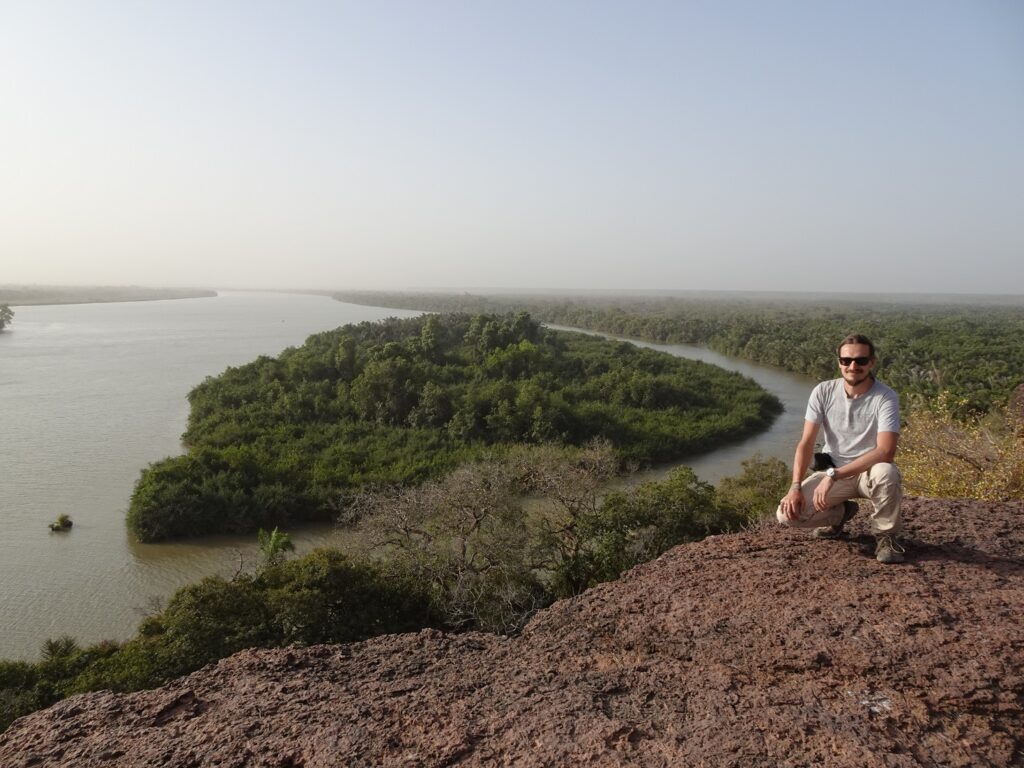
You can visit the cliff by taking an optional boat tour organized by the CRP. The price is 2000 Dalasi for the entire boat, which means that it gets cheaper the more people you can convince to tag along. The boat also went up the pretty Raphia Bolong, where we had a close encounter with a hippo, cutting off our way out of the creek. Nothing like a little adventure in the morning to wake you up 😅.
Red Colobus Project
The Communities for Red Colobus Project is a conservation project focused on protecting and monitoring the endangered Temminck’s Red Colobus monkey. I saw quite a few of them during my time in The Gambia, but they’re still one of the rarest primates in West Africa and highly vulnerable to habitat loss and hunting.
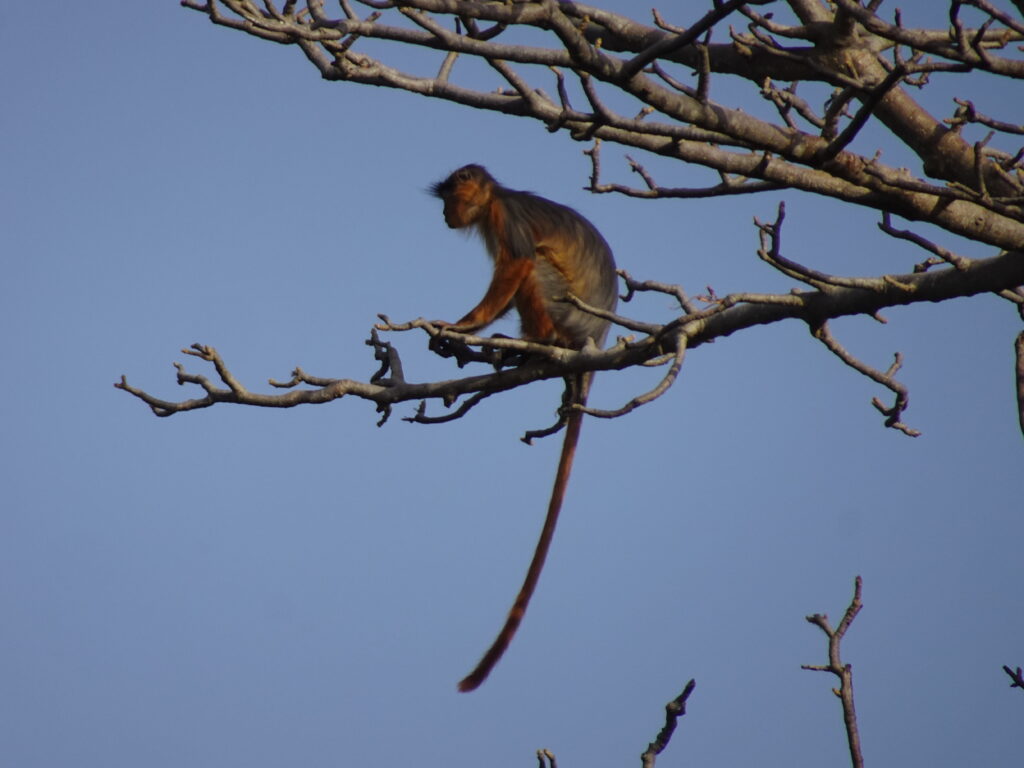
The volunteers working in the project offer half- and full-day tours. I took a half-day tour and got to explore one of the monitoring zones in a pretty section of gallery forest close to a marshland, which was just full of birds.
The project also offers accommodation in a simple bungalow in their camp. I stayed there and highly recommend you do the same if you want to start out early (which is always good for wildlife viewing).
Gambia Horse and Donkey Trust
The Gambia Horse and Donkey Trust is a grassroots animal welfare organization based in Sambel Kunda village on the northern border of the National Park. Its mission is to improve the health and welfare of working horses and donkeys with local outreach programs, but also by taking care of animals that are sick or hurt.
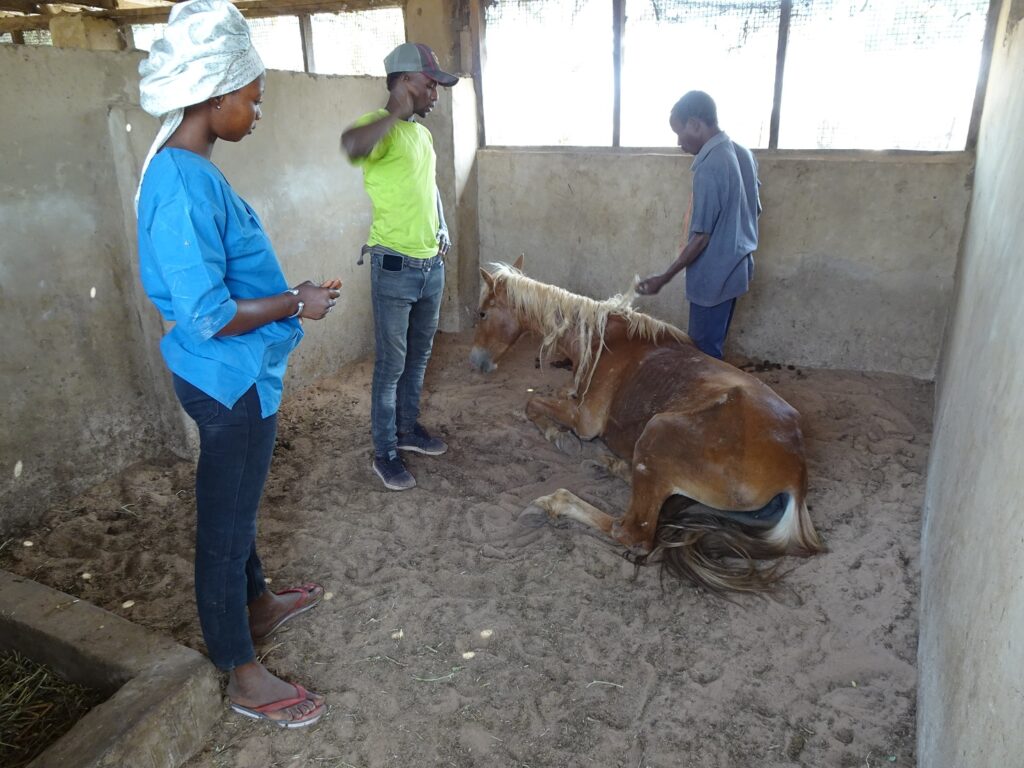
As Sambel Kunda is on the way to the CRP Camp, I stopped here to get a tour of their facilities and to learn about what they do. It’s a super important project and the volunteers are very dedicated. There is no charge for the visit, but I gave them a small donation.
My Two-Day Itinerary for River Gambia NP
I visited all of the projects and places I described above in two days, with one night spent at the Red Colobus Project (C4RC) Camp and the other in the Chimpanzee Rehabilitation Project (CRP) Camp. That way, I managed to see pretty much everything the National Park had to offer without rushing too much.
If you want to do the same, it’s crucial to schedule your visit for the weekend, as the CRP Camp is only open to visitors on Saturday and Sunday. I arrived late on Friday evening at the C4RC Camp, took a dusk birdwatching walk with one of their guides and spent the night at their bungalow.
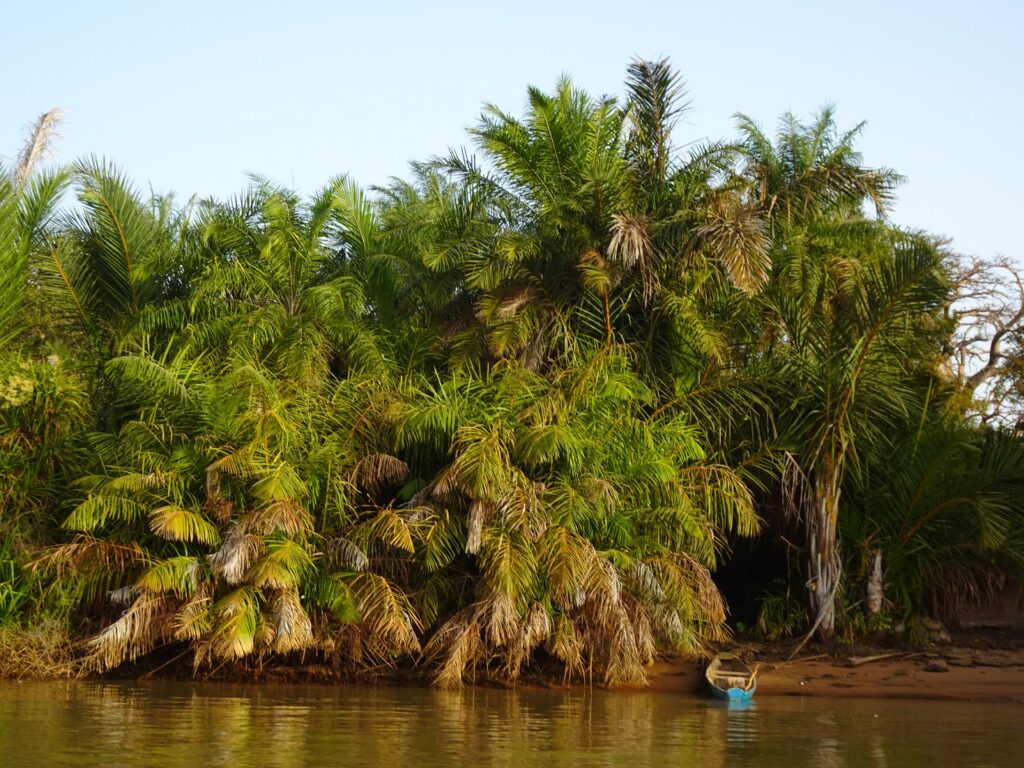
In the morning, I took a tour to visit the endangered Red Colobus Monkeys in one of the areas the project monitors, and then the volunteers gave me a lift to the CRP Camp with a stopover at the Horse and Donkey Trust in Sambel Kunda on the way.
Once in the camp, I took part in the afternoon boat tour to visit the chimpanzees and after dinner, a little stargazing on the river patio and some interesting talks with the project leader Janis Carter and the other guests, took part in the night-time bushbaby walk.
Early the next morning I took the optional boat tour to Sama Boi Konko Cliff and Raphia Bolong and left the Camp shortly after breakfast. Writing it down, I just realize that the whole thing sounds pretty rushed, but it was actually much more relaxed, with plenty of time to hang around in the common area, and I tremendously enjoyed the time I spent in the National Park.
River Gambia NP Map
All of the things to do in the park mentioned above can be found in this map of the National Park.
Practicalities
Transportation in River Gambia NP
Getting around in the area without your own transport isn’t easy, but certainly doable. I did it with a combination of public transport, short-distance taxis and asking people for lifts. To get to the Park, you’ll first have to make your way to Kudang Town.
Kudang is right on the South Bank Road, so you can get there either by GTSC bus or gelly-gelly from the coast or Janjanbureh, if you’re coming from the East. From Kudang I took a taxi, which I arranged with local driver Famara (+220 5132870). If he’s not available, you can also ask around in Janjanbureh for someone to take you.
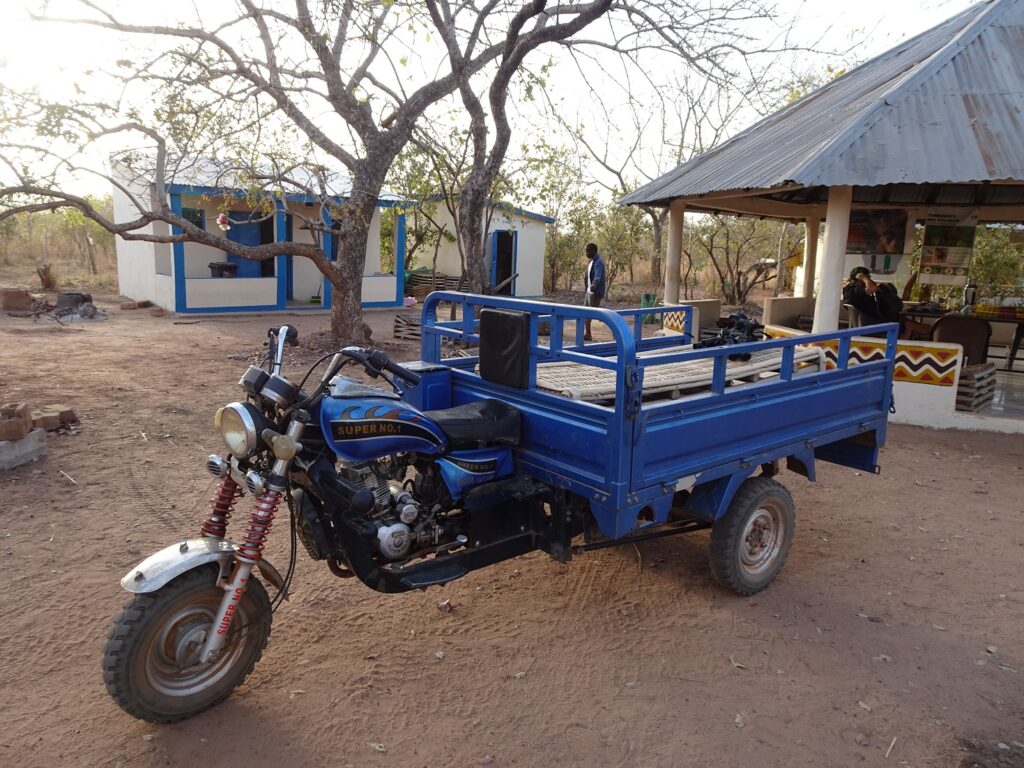
Once in the park, the staff of the C4RC Camp offered to give me a ride to the Horse and Donkey Trust and the CRP Camp on their transport motorcycle, which I happily accepted in exchange for a tip. At the end of my stay, two Danish girls who stayed at the camp with me gave me a lift back to Kudang with their driver.
If stuff like that doesn’t work out for you, you can always call Famara or another taxi driver to pick you up. If you don’t have anyone’s number, the people working at the different conservation projects will also be able to give you someone’s contact.
All the other places I visited were part of official tours of the Red Colobus or Chimpanzee Rehabilitation Project and came with organized transportation.
Accommodation in River Gambia NP
You can either stay in the budget Kairoh Garden Lodge in Kuntaur, across the river from the Park or inside the NP area in the Chimpanzee Rehabilitation Project Camp or the Communities for Red Colobus Camp, if you book a tour with either of those, which is what I did.
Staying in the park is more expensive, but in my opinion worth the extra money, as the included tours are all top-notch.
